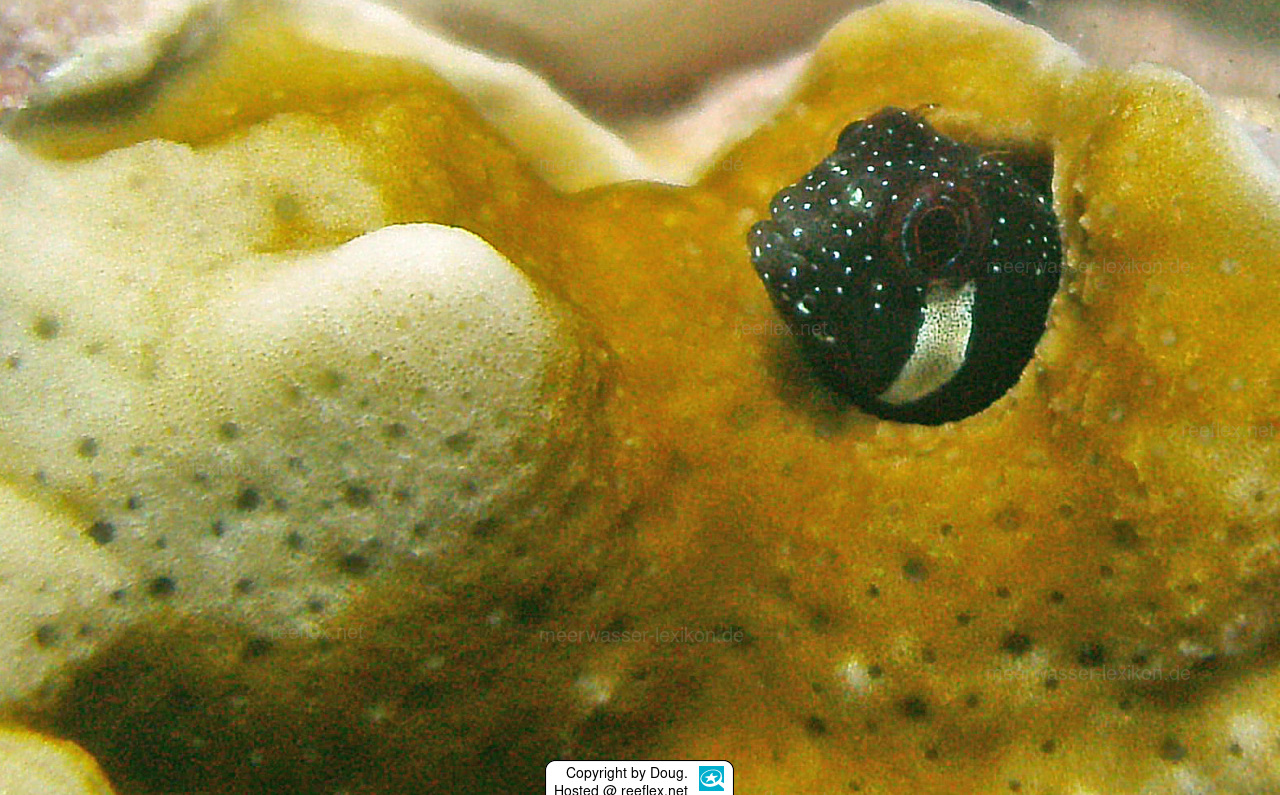Info
The ornate blenny, Coralliozetus cardonae, is a small blenny that lives in very shallow water from the Bahamas to the southern Caribbean, where it can be easily observed.
The blenny lives on eroded limestone slopes, which are covered with small brain corals, sea fans, sea whips, sea urchins, where it can be found in holes or empty barnacles in rocks in shallow surf zones.
Males can be recognized by the black coloration of the front half of the body and the dorsal fin.
Males are heavily speckled with blue spots, the rear half of the body is translucent greenish, with light brown bars; a whitish bar, bordered in blue, at the back and bottom of the eye.
The front three spines of the dorsal fin are whitish orange, all other fins are yellowish.
Females are pale greenish, with a faint stripe along the side, often showing black spots on the underside of the head.
A white, sloping stripe can be seen on the cheek; the front of the dorsal fin is white.
Doug, who took the photo of Coralliozetus cardonae, wrote the following about it:
“Coralliozetus cardonae was photographed at the offshore islands of Los Roques, Venezuela. The dive site was La Guasa, an underwater battlement in the open ocean. The fish was found at the top of one of the battlements at a depth of 3 meters.
The surf was strong. It was a challenge to take just one photo. It was a challenge to get back into the boat. We never saw another one.”
Synonyms: Chaenopsis cardonae (Evermann & Marsh, 1899) · unaccepted
The blenny lives on eroded limestone slopes, which are covered with small brain corals, sea fans, sea whips, sea urchins, where it can be found in holes or empty barnacles in rocks in shallow surf zones.
Males can be recognized by the black coloration of the front half of the body and the dorsal fin.
Males are heavily speckled with blue spots, the rear half of the body is translucent greenish, with light brown bars; a whitish bar, bordered in blue, at the back and bottom of the eye.
The front three spines of the dorsal fin are whitish orange, all other fins are yellowish.
Females are pale greenish, with a faint stripe along the side, often showing black spots on the underside of the head.
A white, sloping stripe can be seen on the cheek; the front of the dorsal fin is white.
Doug, who took the photo of Coralliozetus cardonae, wrote the following about it:
“Coralliozetus cardonae was photographed at the offshore islands of Los Roques, Venezuela. The dive site was La Guasa, an underwater battlement in the open ocean. The fish was found at the top of one of the battlements at a depth of 3 meters.
The surf was strong. It was a challenge to take just one photo. It was a challenge to get back into the boat. We never saw another one.”
Synonyms: Chaenopsis cardonae (Evermann & Marsh, 1899) · unaccepted







 Doug, Curaçao
Doug, Curaçao





